#silo path services
Explore tagged Tumblr posts
Text
10 Expert Tips for Choosing the Best Photo Clipping Path Services
It is visual content that attracts and conveys the message in a digital world. Be it e-commerce business, professional photographer, or marketing agency, the quality of your images will speak loud for the success of your brand. This is where photo clipping path services come into play. These services will help you to generate an image that is clean, polished, and has a tremendous visual appeal by separating it from its background. Among the host of providers, how do you choose the right service for your needs? We'll delve into the details of photo clipping path services with some top-notch expert advice on how to make the right choice.
Understand Clipping Path Services for Images

Photo clipping path services are an important part of photo editing, especially in regard to the isolation of objects or subjects from their backgrounds. This technique involves the creation of a closed vector path or shape around the subject that one wants to obtain from an image, thereby "clipping" it out from the background. This results in a sharp image with a transparent or white background that can be placed into any context.
There are different levels of clipping paths, depending on how complex the image may be. For example, a simple clipping path would include basic, straight-forward shapes like a box or a circle; at the same time, the more difficult ones may involve more intricate shapes that have multiple curves and edges—for instance, hair, jewelry, and machinery.
Types of Clipping Path Services
Basically, clipping path services can be categorized into a number of types depending on the difficulty of the task.
Basic Clipping Path: This is suitable when the product image contains simple shapes like boxes, balls, or any other basic object. Most frequently applied in e-commerce for things like books, phones, and other regular-shaped products.
Compound Clipping Path: This method is used for objects with many holes or relatively complicated shapes—watches, shoes, and group products.
Complex Clipping Path: These are detailed and intricate objects with a number of curves and edges, such as flowers, jewelry, and models.
Super Complex Clipping Path: Applied to highly detailed images, including a variety of curves, edges, and transparency—like nets, bicycles, or even a group of people.
Benefits of Using Clipping Path Services

Using professional clipping path services has the following major advantages:
It enhances product images by removing them from distracting backgrounds, drawing full attention to the product itself, and making it more attractive to potential customers.
Professional Look: Clean, clipped images speak volumes about the professionalism that reflects in your brand image.
Saves Time: Outsourcing clipping path services saves some of your in-house team's time for productive activities related to your core business.
Cost-Effective: Some professional services can prove to be more cost-effective than maintaining an in-house team, especially where the workload may be variable.
Key Industries That Rely on Clipping Paths
There are a number of industries where clipping path services are of paramount importance:
E-commerce: For selling products online, every online retailer needs clear images of their products against a clean backdrop. This shall attract customers to buy the product by looking at the image quality of the product image.
Advertising: Marketing campaigns use images that are flawless in quality so that they can easily be pasted on a number of backgrounds and materials.
Photography: Professional photographers employ clipping paths to ensure that their photographs turn out precisely by their client's requirements, be it a portrait, fashion shoot, or commercial photography.
Printing and Publishing: Publications such as magazines, books, brochures, and many others need the use of high-resolution quality images, usually requiring clipping and manipulation in different layouts.
How to Choose the Best Clipping Path Service

The right clipping path service will matter a lot in the results you achieve with your images. Important elements to focus on are:
Quality of Work: Always go through the service provider's portfolio to get an idea about the quality of his or her work. Look for clean edges, attention to detail, and consistency across different images.
Turnaround Time: In case you want a quick turn-around time with delivering images, speed becomes vital. Ensure that the service provider is able to deliver your job without compromising quality in view of time constraints.
Cost Considerations: While cost should not be the sole criteria, one needs to find a service where quality is well-balanced with affordability.
Expertise of the Team: Given this, it's highly predictable that a high-quality result is more likely to come from experienced professionals. Check the credentials and experience level of the people handling your images.
Reliable customer service is very important, especially if you will have revisions or some requirements. Ensure that they can extend responsive and helpful support.
Quality Control in Clipping Path Services
Clipping path services are such that high quality at work is of essence. Most often, it is ensured with the adoption of a mix between manual and automated procedures to ensure the highest order of accuracy. Manual clipping paths are usually more accurate, though time-consuming, while automated processes, generally powered by artificial intelligence, offer speed but lack the required finesses for complex images.
For quality purposes, it is always best to request sample work or have them conduct a little trial.
Good indication would be if the results of the job are consistent over many images.
Turnaround Time and Its Importance
That means that one major consideration in selecting a clipping path service, particularly for those businesses with a very tight schedule, would be the time of turnaround. Find a balance between speed and quality. Quick delivery is good, but it shouldn't come at the cost of quality in the final output.
Also, ask for the capacity of the provider to entertain bulk orders in large projects without compromising quality. Setting clear timelines is also handy in avoiding misunderstandings later on.
Cost of Photo Clipping Path Services

The pricing of the photo clipping path varies from provider to provider due to the very nature of various work attributes associated with the service delivery. That includes, primarily, the complexity of the image, volume of work, and pace, or the required turn-around time. Normally, the concept applied in this regard is of pricing per image, whereby the more intricate images are expensive for editing.
Quality of service should balance cost. With pressure on to cut costs, going for the cheapest can be a route to poor work, adding time as well as money to put right later. Instead, seek out the one offering best value—high quality at a reasonable price.
Common Mistakes to Avoid
When choosing a clipping path service, don't be caught by these common mistakes:
Choosing Based on Cost: Although price may be a consideration, the lowest price doesn't always offer the best value.
Not Examining Portfolio Reviews: Always view the service provider's portfolio to get a feel for their quality of work.
Not Observing Customer Reviews: Other customers' feedback is able to tell one a lot about how reliable the service provider is and the quality one can expect of the service.
Role of Technology in Clipping Paths
The advent of technology has vastly impacted clipping path services. The tools and software used are nowadays modern, aiding perfect and more efficient editing. Similarly, AI and machine learning are also being embedded in these services to provide faster turnarounds and the capability of handling any complex images with ease.
However, technology alone is not enough. The skill of an experienced editor is still needed, especially in high-end projects that require a personal touch.
Personalization of Clipping Path Services

Personalization of your required clipping path service can make much difference. You should clearly let the service provider know the details of your requirements, like the level of detail needed and for what the images are to be used, among other specifications.
Reference images and detailed instructions can help to ensure that the final product turns out as expected. The more information provided, the better a service provider will be able to tailor an approach to suit your needs.
The Need for a Reliable Team
A trustworthy team is the backbone of the clipping path service. Experienced editors are bound to bring a level of expertise with them, influencing the quality of the final product significantly. They are more familiar with the nuances of different image types and will be able to turn in refined and quality output consistently.
Matters of effective communication with the team are also very important. Ensure that there is a clear line of communication open for discussing project requirements, giving and receiving feedback, and revisions.
Customer Support in Clipping Path Services
Good customer support is very much essential for the smooth and successful collaboration. While opting for any clipping path service, it is necessary to consider those service providers that have speedy and effective customer support, clear channels of communication, the ability for revisions, and handling any issues that may arise.
Good customer support is crucial in large projects or long-term cooperation. A reliable contact person can significantly facilitate the process and avoid potential misunderstandings.
Case Studies: Success Stories
One can understand how effective a clipping path service can prove to be from real case studies or success stories. Explain the examples of works similar to yours and how the service provider handled them. Note the kind of challenges that were faced and what solutions were implemented along with the final results.
Success stories can be further highlighted in respect to the provider's ability to respect the deadlines, deal with complex requests, or deliver constant quality—all of which may give you a feeling of confidence that they will be able to really satisfy your requirements.
Conclusion
The world of visual content is unimaginable without quality images, which either make or break a brand. Photo clipping path services will help in giving a polished professional touch to images and make them stand out amongst the stiff competition. From knowing the different types of clipping paths to their benefits and how one can choose the right provider, this post will guide you through the process of achieving professional results every time.
Global Photo Edit is specialized in delivering the finest quality of photo clipping path to clients as per their requirements. With a highly skilled team of editors working throughout the day and night, we strive to provide the most accurate, reliable, and inexpensive solution to make your images talk. Be it increasing the quality of the images of your products on e-commerce or professional photos for advertisement purposes, Global Photo Edit is always there to make your images alive through superior clipping path services.
0 notes
Text
Sims 2 Monty Starter Houses!

I've been in the process of starting a fresh Veronaville save and as many people have pointed out: the disparity in number of affordable houses on the "Monty" side of town is ridiculous. Two mansions and an abandoned silo? None of these are even remotely affordable for Bianca or Antonio's family. Not to mention, any new Montys will have no choice but to settle on their sworn enemy's side of the river! What if you want some reasonable, base game, Monty-themed starter homes for your sims?
Welcome to my first attempt, you've come to the right post! Here are six base-game compatible builds themed after the Monty side of Veronaville. All have been playtested, run through clean installer, and checked for any mistakes.
The first three homes are affordable for sims with the given 20,000 simoleon budget, and the last three are slightly more upscale (ranging from 20,000 to 28,000) to try and bridge the gap between the larger mansions like 111 Stratford Street and 267 Avon Avenue. The lots are entirely compatible with base game and require no expansions or stuff packs, since I wanted them to easily blend in with the existing Monty architecture.
All lots are 2x2 for convenient placement, and many have enough empty space to expand upon as you wish. I personally would encourage the player to cluster them to match the Capp side of Veronaville (no self respecting Monty would let the Capps have a monopoly on real estate, right?).
Starter House 3/4 is designed for Bianca Monty, while Starter House 6 is designed for Antonio and his twins. They could also make do in Starter House 5, with some light modifications or creative bed placement.
Notes/Quirks:
You may notice Starter House 5 is lacking some doors to back outdoor verandas. This was done purely to keep the price low and the layout succinct, but you may add doors to them and they will not impact the front door placement (though sims may occasionally take an awkward route around the outside of the house).
Regarding Starter House 6, the gate in the back of the house is useless. Sims will not go through it due to the conveniently placed archways, and the gate was placed simply for effect. After numerous attempts and playtesting, I've found it's best to just leave it as is, or delete the gate the leave the fence lest you wish the Welcome Wagon wandering into your private courtyard.
I encourage modifications of these homes, as you deem necessary. I make no claims that they're perfect: after all, Maxis style builds are almost famous for their weird little quirks and slightly impractical design. Feel free to use these as start templates as well, if you prefer to change anything!
All houses path properly (i.e. deliveries and service sims use the archways/doors closest to the main pathways). No awkward deliveries for your sims, hurrah!
Due to Simsfileshare acting up, I wasn't able to upload the full set in one concise folder. For that, please use this link. Individual downloads are below, if you want only certain houses. Happy simming!
Monty House 1


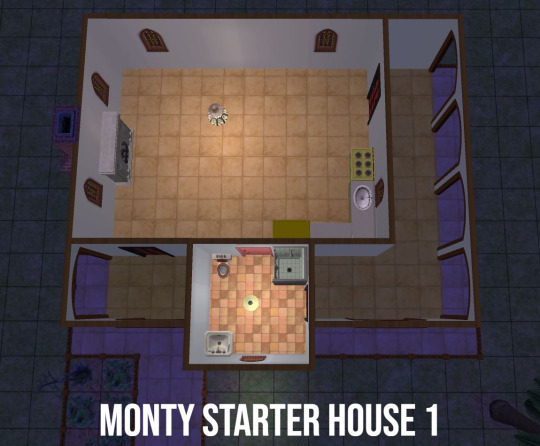
Monty House 2




Monty House 3


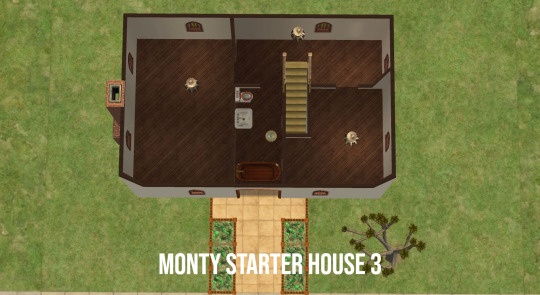
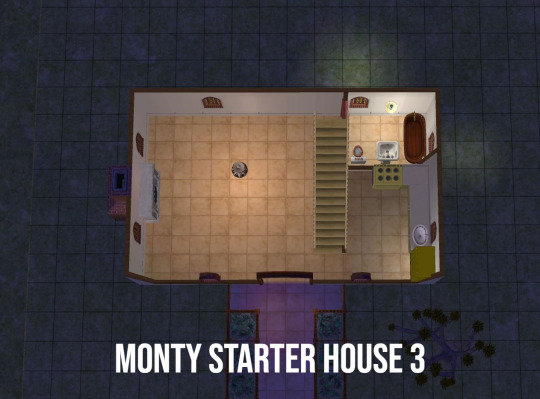
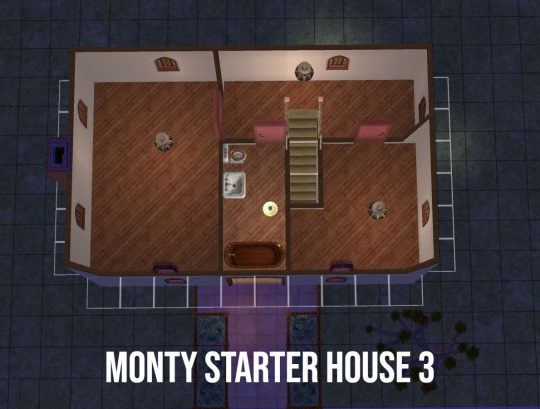
Monty House 4



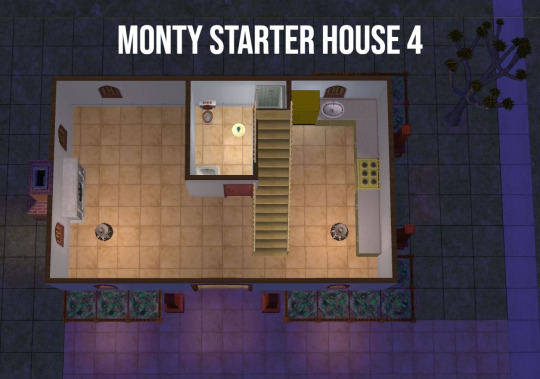

Monty House 5


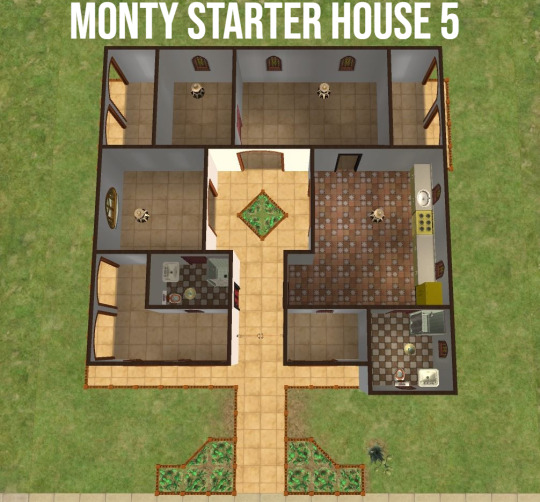


Monty House 6





#sims 2#veronaville#sims 2 builds#sims 2 starter homes#sims 2 monty#sims 2 base game compatible#sims 2 cc free#ts2#thesims2
21 notes
·
View notes
Text
My Nostalgic Time Machine
Summary:
Owen Carvour falls. Falls in love, falls to his death. That's how the story goes. This is how he claws his way back up. Back to Curt.
Holy shit. This fic took me so long but it's DONE! My friend made me listen to this song and then the writing demons possessed me and I had to write this. This was essentially me asking "What if Owen really meant it when he called the Deadliest Man Alive a character he was playing?" I hope that everyone enjoys this one!! <333 (I'm sorry about the formatting. I cannot center this shit for the life of me. If you want to read it where it looks pretty I have it posted on my @hellyeahheistbooks ao3 account)
Every now and then, I think of you
I think of all the things we'd do
Drinking Diamond White and Malibu
And then when it run out, Taboo
We would stay up late and fool around
Caught up in deep-and-meaningfuls
I told you things I'd never told myself
I grew up right in front of you
Curt Mega and Owen Carvour had once been young and in love and invincible. Two of the best spies the world has ever seen is what they used to call themselves.
Of course, they weren’t wrong. It took time and effort, success and failure, and far too many near-death experiences to earn that confidence. It was only a shame that competence melted away to arrogance, the satisfaction of a job well done no longer comparable to the thrill of danger, of just barely pulling something off.
Who knew that you could be on top of the world one moment, and plummeting down a silo the next?
It started off as most things do in their field: A simple one-off mission.
The American Secret Service and MI-6 experienced a rare moment where their objectives aligned and, in a twist of fate seemingly ordained by something much bigger than any of them, sent Agent Curt Mega and Agent Owen Carvour.
They were sent with strict instructions to stick close to their temporary partner and ensure that they didn’t get away with taking more than their fair share. Their meeting was laced with the appropriate amount of suspicion their profession required, cordiality masking calculation, one hand clasped around an arm and the other resting on their pistol.
Although they were told to keep an eye out, there’s no room for mistrust when your backs are pressed together, surrounded and shooting your way out of a mission gone sideways. Placing your life in the hands of a stranger and protecting theirs in return forges a bond that is near-unbreakable.
Owen Carvour ran a hand through his hair as he thanked Curt for not leaving him behind, and Curt Mega straightened his jacket as he did the same.
That might have been the moment when they realized their fates would forever be intertwined.
A tentative, if unexpected, alliance began to form. As long as the job gets done, who cares if you have to send in two agents from opposite sides of the pond? Curt and Owen certainly didn’t. In fact, they would look forward to those missions and, before long, they began to ache for them. The distance was a palpable, horrible thing and the time between assignments wrapped them tight until it felt like they could only truly breathe in the presence of the other.
Being spies, it was only reasonable that they had secrets of their own.
Nights were spent peeling back layers, exposing the rawest parts of themselves and whispering things that only felt real in the dark until the confession that Curt liked boys the way he was supposed to like girls tumbled out.
Tension stretched throughout the room, an elastic band waiting to snap.
But then Owen laughed, a soft, genuine thing, and said me too.
That’s when the layers they removed stopped being quite so metaphorical.
So, there it was. For years they watched each other’s backs, finding excuses to take an assignment in the hopes of crossing paths. Time apart was spent waiting to reunite and reuniting was spent making up for time apart. Sending coded letters and sweeping rooms for bugs became a routine, something that whispered this is ours no matter what they say, and we won’t let anybody take it away from us.
And then, “Oh, Curt Mega, you’re going to be the death of me.”
And then, “Nah, I’d never let you down.”
I forgive, you forget me
That's just how it's meant to be
(That's just how it's meant to be)
My nostalgic time machine
Transporting me back to you
And you to me
It hurt. God did it hurt. The process of his body knitting itself back together was slow and arduous even without the Russian’s insistence on resetting his bones before beginning their torture.
But Owen was trained to withstand physical pain. He could take a beating better than anyone he knew, he was prepared for this situation. Agent Owen Carvour was always prepared.
The one thing he’d never prepared for was the eventuality that his partner would turn his back on him. That he would leave Owen to die.
Curt had always told him that he couldn’t plan for everything.
So Owen fell back on what he’d always been able to rely on: Logic, facts, protocol. Curt’s priority was to retrieve the nuclear weapons blueprints and hand them over to Cynthia, something that’s rather difficult to do while dead.
That’s not to say that he wasn’t angry. No, anger wasn’t enough to encapsulate what Owen had felt at first. Rage, perhaps. Fury seemed to be the best fit. A fire that threatened to burn him from the inside out.
Mostly because it was utterly avoidable. A series of stupid mistakes that Owen himself had expressly advised against making.
And a few that he had encouraged.
It was hard to blame him though, when the anger ebbed away and he was simply left with a helpless sort of fear. They’d pulled shit like this all the time, constantly trying to one-up or impress each other. It was bound to bite them in the ass sooner or later.
Now, Owen just wanted Curt to come and save him more than anything. Damn his pride, damn their competitions, and damn their governments.
But if his agency was following protocol, any trace of Owen’s existence would be thoroughly scrubbed and he’d be pronounced dead almost immediately. And likely not in that order. Curt would have no reason to come look for him, especially when it looked as though he’d died from the impact of his fall.
It didn’t stop Owen from wanting, though.
It didn’t stop him from waiting for a saviour that would never come.
Voices
Seven of them inside of me
Each requiring autonomy, autonomy
Hostage
Trapped forever in a prison
Nothing's truly ever what it seems
Owen’s forgiven Curt. He has. It doesn’t stop him from wanting to go back though, to get Curt to listen to him.
To change things.
To make sure they could always be the same.
He’s forgiven Curt, despite what Chimera’s been telling him ever since they bought him from those Russians.
He’s forgiven Curt, despite the nightmares he can’t seem to shake.
He’s forgiven Curt. Because, if he hasn’t, that turns everything they used to have into ash, and that can’t happen because Owen doesn’t have anything else to hold on to right now.
But there are moments where Owen forgets that he’s forgiven Curt. When everything Chimera tells him makes another chip in his defences. Owen’s not allowed to get any external information on his own and he knows what that means, it’s a very common manipulation tactic.
Common because it’s effective, and not even Owen is invulnerable.
At night he dreams. He dreams about that silo, about slipping on that banana peel and just falling.
Sometimes it feels like he’ll never stop falling.
More and more often, he sees Curt’s face peer over the edge, watching him as he plummets to the floor. Not like it was that day, though. Not calling out Owen’s name in horror, desperation plastered over his face and twisting his features.
This Curt simply watches, emotionless. It hurts more than he expects each time. Night after night, Owen falls to what might as well be his death, and the person he loves most in the world can’t bother to dredge up anything more than indifference before turning his back and walking away. Leaving Owen alone.
And then Owen wakes up. Alone.
Always alone.
That part remains the same, at least. Waking or sleeping, Owen Carvour is alone.
But still, Owen clings to the actual memories of his past, the knowledge that he was well and truly loved. He uses them as a shield against the voice in his head that screams at him that it was all for nothing, that if Curt had truly loved him, he would’ve rescued him.
Would’ve died alongside him.
Part of Owen, the part that was mangled beyond repair by the explosion, then the torture at the hands of the Russians, then the psychological manipulation by his supposed saviours, wants that tangible proof. It wants to have Curt’s corpse laid at his feet as a testament to the love that it’s no longer able to feel.
The rest of him recoils at the image of any harm coming to his partner. It sags in relief whenever he remembers that, yes, Owen had suffered at the hands of Curt’s idiocy, but Curt had survived.
Owen doesn’t listen to Chimera when they tell him that Curt simply moved on without grieving. (They don’t have a choice in this profession.)
Or when they said that Curt hadn’t attended his funeral. (Even if the MI-6 had held a funeral for him, they certainly wouldn’t have allowed an American to bear witness.)
Or when they said that Curt was happier now. That maybe, just maybe, he’d set that bomb for three minutes for some other reason. (He wasn’t. He hadn’t.)
Instead, Owen remembered.
Every now and then, I think of you
Nirvana playing in your room
"Choking on the ashes of her enemy"
You'd sing out of tune
"I'm not like them but I can pretend"
You would often say to me
And I knew exactly what you meant
We could never be completely free
Out of all of their safehouses, Owen’s favourite was the one in Guatemala. It contained a record player and a comprehensive collection of albums to fill the space with a soothing melody, washing away the reality that was their lives.
“Owen.” That voice.
Owen blinks, looks up, and there he is. Curt Mega is smiling down at him, all softened edges and gentle tones with a hand outstretched to where Owen is sitting. They’re laying low after a mission gone well, confined to this safehouse for the next few days and determined to make the most of it.
A jazz tune fills the air, Owen sits on a couch with a book propped open on his lap and one hand curled around a mug of tea, his ankles are delicately crossed. The picture of comfort.
“Yes, dear?” It’s still a marvel that he can say that. Several sweeps of the house had confirmed that neither of their agencies had managed to stick a bug somewhere, so Owen and Curt are allowed to simply be.
Curt grins wider, extending his hand further. “Dance with me.”
It’s funny, out of the two of them Curt is certainly the worse dancer. They’ve been sent to enough high-class galas that Owen knows to keep an eye out for a bumbling American. On a mission, when they have an objective, Owen can’t help but find the extra attention Curt draws to himself aggravating.
They’re not on a mission right now, though.
Curt’s hand is warm in his and his fingers close around Owen’s like he’s something worthy of being held. Owen places his tea on the table and lets the book slide off his lap as he allows Curt to pull him to his feet.
“Well,” He sighs in a faux put-upon voice, “If you insist.”
He allows Curt to take the lead, if only to see the glint in his partner’s eyes as Owen relinquishes that little bit of control. It doesn’t happen often, Owen likes to know exactly what will happen when it will happen and having that ripped away from him fills him with an icy dread he’d rather not acknowledge.
It’s different with Curt, though.
He trusts Curt.
They sway to the music, foreheads pressed together. Owen’s eyes drift shut and he allows himself to simply savour the moment, the knowledge that they could be called back to their respective countries at any moment slipping away with every shared breath.
Of course, Curt’s the one who breaks the silence. Owen’s honestly impressed that he refrained from filling the space for this long.
“I wish we could be together.” Owen raises an eyebrow at him. We are together, do you need medical attention?
Curt laughs a bit, “I mean, like, out there.” He gestures to the window with the drapes pulled firmly across, “I wish we could go to those stupid balls and dance together. I wish that I could hold your hand without being afraid for my life. I wish that we could just be. Without hiding.”
It was almost too much, the tinge of desperation in his voice and the way he gazed up at Owen, sincerity leaking out of him in a way that was almost painful to witness.
Out of the two of them, it’s typically Owen who has a way with words. He’s talked them out of more scrapes than either of them would care to admit and has both the vocabulary and the so-called posh accent to back it up.
But now, he finds that he doesn’t quite have the words to express the swell of emotions that overwhelms him, so he simply leans down and presses a slow, gentle kiss to Curt’s lips.
Owen pulls away after a moment, trying to pour everything he is and was and ever will be into his, “Me too, Curt. More than anything.”
I forgive, you forget me
That's just how it's meant to be
My nostalgic time machine
Transporting me back to you
And you to me
And me to you
And you to me
Owen blinked his eyes open and the cold, empty, quiet room that had become his prison is the only thing that greets him.
Well, that and the camera with its red blinking light in the corner.
He doesn’t let himself linger, doesn’t let himself reminisce, just pulls himself out of bed and mechanically dresses himself for the day. They aren’t clothes that Owen Carvour would wear, which makes sense as Owen Carvour died years ago in a mission gone horribly wrong.
They are perfectly suited for the Deadliest Man Alive, however.
The wide array of turtlenecks is undoubtedly the worst. Owen despised the feeling of fabric resting against his neck, the constant pressure just one moment away from cutting off his airflow. But they did a better job than anything else at covering the seam where his mask ended.
Somehow, against all odds, Owen had managed to cover his face before the bomb went off and the silo collapsed on top of him, leaving him recognizable at the very least, and Chimera wasn’t exactly one to take chances.
The same couldn’t be said for the rest of him, however. The amount of surgery and physical therapy that Owen had to go through simply to walk again was absurd. He’s covered in burns, there are places where his skin doesn’t stretch the way it should, and he aches.
When he wakes up, he aches. When he walks, a dull pain thrums throughout him with every step. His nerves sing with remembered agony and parts of his body no longer belong to him.
They belong to Chimera.
Owen belongs to Chimera.
So he puts on the clothes that don’t belong to him, and the face that doesn’t belong to him, and the voice that doesn’t belong to him, and the name that doesn’t belong to him, existing as a ghost in a life that never belonged to him.
The only thing that belongs to him is his memories of Curt, and Owen clings to them with a desperate ferocity as he cobbles together what remains of his identity and tucks it away into the little crevice where his heart used to sit.
Voices
Seven of them inside of me
Each requiring autonomy
Oh-oh-oh autonomy
Hostage
Trapped forever in a prison
Nothing's truly ever what it seems
Of course, Owen can’t afford the possibility of anyone catching a glimpse of humanity, so he buries it deep down where even he sometimes forgets it resides.
Ruthlessness is what it takes to survive in this world, with these people, so that is what Owen created the Deadliest Man Alive to be. Chimera’s perfect lackey, an amalgamation of all the worst things the world has to offer meticulously stitched together to hide the raw and bloodied corpse underneath.
Nobody knows much about the Deadliest Man, and only a select few know who he’d been before. The puppet masters pulling his strings, controlling the splintered, warped wood that make up his little marionette.
Only three things are certain about the Deadliest Man:
One, he was breathed into being four years ago, some say by the Devil himself. There’s no record of a man with his description ever existing before then, even within Chimera’s database.
Two, he’ll do whatever Chimera asks of him without hesitation or remorse, leaving him with a kill count in the thousands.
And three, he hates Agent Curt Mega.
There’s an ongoing debate as to why. Some say that it’s because Mega is the greatest spy to ever live and he takes a personal affront to that. Others speculate that it’s because he’s the one target the Deadliest Man failed to execute and he’s held a grudge ever since. The quietest whispers ponder if perhaps they used to know each other, as the hatred seems to burn too brightly for a mere failed assignment.
People scoff at that. How could they possibly know one another if the Deadliest Man has only ever existed within the walls of Chimera and the parameters of their mission?
Ultimately, the reason why he hates Agent Curt Mega doesn’t matter, simply the fact that he does.
It’s just that it’s getting harder and harder to find the line that separates Owen Carvour and the Deadliest Man. How can he when his every move, his every word, his every thought is constantly monitored by people who wouldn’t hesitate to kill him if he proved to be any sort of a liability?
Owen Carvour has no room to exist in this world, he barely had any space to exist in his old one.
The only time he’d really been able to just be was when he was cradled in Curt’s arms, and that hasn’t been his reality in a very long time. Sometimes, it’s hard to believe that it ever was.
Now, when Owen closes his eyes at night and pictures Curt, trying to find solace in that little flame of love that continues to burn in the stark cold of this place, the way Curt turned his back and ran away as he fell kicks up a wind that tries to blow it out. The hatred that he’s been carefully cultivating threatens to consume him in its entirety, thundering in his veins with every beat of his mangled heart and crackling like lightning under his skin.
Owen’s not sure how much longer he can keep the fire burning in the face of the storm.
It took a little time to be without you
Musicality nearly left me
We were intertwined like fire and water
(Fire and fire and water)
The reason I was shook because of you
Hope cannot last forever, although Owen held onto it for longer than most.
He passes through his days in a fog, the endless grey only interrupted by slashes of crimson red, and those soon grow dull as well. Owen Carvour is nothing more than a fairy tale, someone who only appears in dreams and stories but isn’t quite real anymore.
There’s still something, though.
A phantom pain. The knowledge that something should be there when it isn’t. A comforting tune, a rush of adrenaline, a brash, carefree laugh. It pulses within the empty space beside him. The empty space inside him. All reminders of something.
Of someone.
Of…
“I second that motion.”
Oh.
You took all my yearning and all of my hunger
I was like a child without a mother
I can't forget the cassettes
That you made for me everyday
I mistook your sad look
For the end, maybe I was too hasty
Curt’s there.
He’s right there, with that horrible beard and an uncertain grip on his gun and Owen Carvour breaks through the crashing waves in his mind for the first time in years and finally takes a full breath.
And he can’t say a damn word.
He nearly does. A tide of emotion almost sweeps the words out from him, the desperation for everything to just be okay again coursing through him.
But they’re not alone. Sergio and the Russian spy that Von Nazi has under his thumb are both behind him and he can’t afford any witnesses right now. Not for this. Owen is also acutely aware of the many bugs stashed throughout the meeting location and on his person.
Curt raises a gun to his head and he dodges. It’s second nature, really. Owen’s watched him kill hundreds of times, he knows what tells and twitches precede him pulling a trigger. He never expected to be on the other end of things, but at least he gets away unscathed.
Mostly.
When he gets far enough away, he shoves his fist in his mouth to muffle his heaving breaths. His heart is pulsing in his chest, trying to pull him back the way he came so violently that Owen fears it’s going to break through his ribcage and tear its way through muscle and skin just to get back to Curt.
Owen had forgotten how Curt’s soft brown eyes could warm even the coldest parts of him.
Those eyes have hardened in the past four years, which sends a pang of loss ringing through the empty space that resides within him.
It’s to be expected.
He needs to get Curt alone, somehow.
Getting Curt alone did not go well.
As much as Owen likes to believe that he’s pulling the strings in his own little operation, there’s always a disembodied someone breathing down his neck. A second heart that thumps in time with the flashing red dot on a security camera.
It should upset Owen, how easily he was able to slip back into the persona of the Deadliest Man Alive with Curt in that chair. Sure, he’s done much worse over the course of his career, making this fairly tame by comparison, but still.
It was Curt.
Curt’s blood that washed over his hands. Curt’s voice that screamed in agony. Curt’s warmth that was there, just under his hands.
It should have been harder. Owen should have said something. Should have fallen on his knees and begged for forgiveness. He should have laid all his sins at Curt’s feet and accepted his judgment, whatever it may be.
But he didn’t.
Because no matter how much he told himself that Curt couldn’t have done anything to save him, Owen still sees the way that he turned his back when he closed his eyes. Years of betrayal, half-staged, half-real, and still festering stay his tongue.
That, and fear.
Owen has spent years missing Curt, longing for him. Nights were dedicated to immortalizing the particular timbre of his voice or the way his hand felt on Owen’s shoulder. When he managed to sleep, Curt was there. In every dream and every nightmare, Curt was there.
Days were spent going against everything he and Curt had ever believed in.
The man he’d fallen in love with would want nothing to do with what Owen had become. There’s no way the Curt he knew would still love Owen if he found out about any number of the horrific things he’d done.
He’d say that Owen should’ve died in that explosion, and Owen would be inclined to agree with him.
Owen shoots Curt in the shoulder before he makes his escape, a gut reaction to hearing his name tumble from Curt’s lips. Ice spears through his veins, a roiling fear that Curt knew. He knew, and he would turn away from Owen like he did all those years ago, making everything Owen had endured utterly pointless.
All the suffering, all the tears.
Each day that Owen clung desperately to life with bloodstained fingertips.
All in vain.
But Owen has been cold for so long, and he’s so close to feeling warm again. He’d gratefully burn in the fire of Curt’s hatred, watch his skin bubble and peel away under his touch, if only it meant that he would be seen. Would be touched.
He will not let this opportunity slip away.
Voices
Seven of them inside of me
Each requiring autonomy
Oh-oh-oh autonomy
Hostage
Trapped forever in a prison
Nothing's truly ever what it seems
Owen tried to tell him. The mask was off, the cameras still rolling, and he tried to get Curt to just understand, to look past his heartbreak and Owen’s ridiculous monologuing that Curt used to always make fun of and hear what he was actually trying to say.
“The Deadliest Man Alive, what a juicy character.” That man isn’t me. He was a facade. A ruse I conjured up in order to survive in here with broken bones and no escape.
“It takes quite a bit of discipline to research and rehearse a role to perfection.” I didn’t want it to be this way. I have poured every ounce of strength into getting up every morning, into not letting those bastards break me.
“Damn. I really should’ve been an actor.” I’m still in here, Curt. I’m still here but I’m so tired, please don’t let me fall again.
Of course, Curt’s never really been one for reading between the lines, and Owen’s getting desperate. And when he gets desperate, he gets creative.
As he leads Curt on a wild chase around the world, the face of a little girl flashes in front of him. He hasn’t seen his sister in over a decade, the war devastated them and Owen was recruited into the MI-6 with the assurance that they’d provide for her.
When Chimera had sat him down for his first proper introduction, they tossed his file in front of him, just for a moment. It was long enough for Owen to see the name Evelyn Carvour neatly printed under ‘Known family.’ It was a subtle threat, one only the best spies would catch, which is clearly why they let him see it.
Any betrayal on his part falls on her head, so he plays the good little soldier and never steps a foot out of line.
Until now, at least.
God, he hopes that she’s okay.
Chimera has eyes everywhere. They can tap into any security feed, they can buy any witness, and every single person who works with them wears a wire. Any attempt at tampering with any of these things is fatal.
Owen leads them to a weapons facility, it nearly took his breath away with how similar it was to that silo. Perhaps it was fate that drew him here, allowing this to end the same way it began, one way or another.
Then he has a gun pointed at Curt’s head, delivering a godawful speech solely for the benefit of those watching him. He says that he invented fire, which is ironic. It was fire that melted Owen down and molded him into whatever he is now. Fire that burns within him every day in an effort to destroy the last little bit of himself that he’s managed to salvage.
It was fire that killed him in that explosion. Fire that keeps trying to kill him. And Owen dares to claim some sort of mastery over it after it took his life and reduced it to ash, forcing him to begin again.
There are only two cameras in the facility which is nothing short of a miracle. It’s second nature to Owen to scan for them and he can feel the buzzing of electricity against the back of his neck as mechanical eye bore into him.
Suddenly, Curt shoots his gun out of his hand, and Owen hesitates.
Good, a part of him whispers, let him finish what he started and you can finally rest.
And Owen knows exactly what he needs to say.
“You know, killing me won’t take the system offline so, what are you doing, Curtis?”
✦✧✦✧
Every now and then I think of you
I think of all the things we'd do
✦✧✦✧
They’re lying in bed, allowing themselves a brief, calm morning before they need to return to their tumultuous lives. The light filters in through the window, distorted by the sheer drapes that cast them both in an unearthly glow.
Owen runs his fingers softly over Curt’s arm, focusing on the feeling of hair under his hand and puffs of breath against the back of his neck.
“Curt, I really should be going.”
Curt doesn’t respond past the minute tightening of his hold on Owen, running his upsettingly cold nose over the nape of Owen’s neck, eliciting a faint shiver.
Owen huffs. It’s a tender, fond thing. “Curtis—”
“Ughhhh,” Curt draws his complaint out into a whine, “Don’t call me that.”
A smile pushes onto his face, “What? Curtis?”
“No. Never call me that again. That’s what my mom calls me.” And while Curt bats ineffectually at him, Owen can hear the smile in his voice.
“Never?” Owen turns in his hold so he’s facing Curt, tracing the soft lines that sleep has graced him with his eyes, “I find that I quite like it.”
Curt hums in mock contemplation, placing a brief kiss on the tip of Owen’s nose and shooting a smug look to the faint blush that colours his cheeks. “Hm… Fine. You can call me Curtis only in a life-or-death situation and you need me to save your ass. Sound fair?”
“You? Save me?” If Owen’s eyebrows could lift any further, they’d be floating above his head, “I’m never going to be able to use it!”
“Exactly!” And then Curt draws him into a proper kiss, and Owen figures that he could let Curt have this one.
✦✧✦✧
Every now and then I think of you
I think of all the things we'd do
✦✧✦✧
Curt’s aim falters, just briefly. His eyes widen and they scan Owen frantically, looking for something that Owen is desperately trying to show him.
When he speaks, it’s nothing like the confident spy he once knew. “…Owen?”
Owen doesn’t say anything, allowing that shaky, tentative question to hang in the air between them.
His eyes dart to the side, imperceptible to anyone except the person standing just a few feet in front of him.
The person who still has a gun to his head.
Curt glances up, scanning the room as subtly as he can. His shoulders straighten, his grip on his gun tightens, and Owen closes his eyes.
BANG. BANG.
Two gunshots fire in rapid succession and Owen flinches on instinct.
And then he opens his eyes.
There are no wounds. Owen isn’t bleeding out like he thought he would be. He looks up at Curt who has tears glistening in his eyes, then at the two obliterated hunks of metal where security cameras used to be.
Curt’s mouth opens and Owen rapidly brings a finger to his lips, pleading with him to not ruin this when he’s so close. He brings his hand to his jacket and slowly moves it off to the side, revealing the wire tucked into it. Curt’s eyes lock on to it, and he nods.
“There,” Curt says, lifting his gun once more, “Nobody gets to take this moment from me. Nobody gets to see this. I want to be the only person that can watch the life drain from your eyes. I deserve this.”
Owen’s breath is punched out of him, “Curt—”
BANG. A third shot whizzes past his head and Owen throws himself backward, landing painfully on the cold, metal stairs. He hacks, bringing his hands to his chest, near where he knows the mic rests.
Hands fist into his shirt, pulling him close.
“Good riddance you—oh come on.” Curt grabs onto the wire, leaning in close and whispers, “I’m coming for the rest of you next.”
He rips out the wire and the sending device along with it before throwing it on the ground and crushing it under his heel. Then he takes out his gun and shoots it for good measure.
Owen lays there for a moment, frozen, unsure what to do with himself now that the everpresent weight of being watched is no longer there. It’s like the world has been ripped out from under him and he’s falling again.
But then, a hand enters his vision, and Owen sees Curt looking down at him. Tears are streaming down his face, and Owen realizes that he’s crying too as he reaches up to grab his partner’s hand.
He hesitates a hair's breadth away from making contact.
“Let me help you up, Owen. Please.”
Their hands connect and it burns. Fire races up Owen’s arm as Curt pulls him up and sears through him as he crashes into his chest. Owen’s fingers claw into his back, legs trembling in their efforts to support him.
Curt’s arms wrap around him, holding him up, and Owen’s legs give out entirely, trusting Curt to keep him from falling.
The thought slams into Owen, tearing a broken, shuddering sob out of him.
“I’m sorry.” The word is whispered into his shoulder, that one drop becoming a torrential downpour that threatens to drown him. “God, Owe, I’m so sorry. I’m sorry I’m sorry I’m sorry I’m sorry I’m sorry please forgive me.” The pleas devolve into incoherent muttering and Owen realizes that he’s not the only one trembling.
Owen chokes on his words. The first time in four years that he doesn’t have to monitor his mannerisms, his inflections, and he can’t find a single thing to say.
“I—” Owen pulls back to look at Curt, the idea he’d clung to in order to survive now here in his arms, “I’m not the same man, love.”
I’ve done horrible things, he doesn’t say. Things that you would abhor. Things that keep me awake at night. My love for you has been tainted by loathing and my broken pieces have been rearranged into something I do not recognize. You should hate me for the monster I’ve become.
A noise punches out of Curt, half-scoff, half-laugh. “Owen, angel, I really could not give less of a fuck. You’re here.” He runs a hand through his hair incredulously, “I mean, I never thought that I’d be able to tell you that I love you again.”
A small, fragile thing Owen can vaguely identify as hope blooms in his chest. “Well, you still haven’t, to be fair.”
Curt brings his hands up to cup Owen’s face and takes in a deep breath, lips splitting into an awed smile, like he can’t believe he gets to do this.
“Owen Carvour, I love you.” He lets out a breathless laugh, “And I’m never letting you out of my sight again.”
A snort escapes Owen and he can’t remember the last time he actually laughed.
“I love you too, Curt Mega.” And Owen is relieved beyond measure to find that he really, truly means it.
Curt nods decisively, “Good. We can figure everything else out later.”
Then, almost reverently, Curt tangles their hands together and begins leading him down the stairs. Owen can’t help but notice that Curt keeps himself between Owen and the railing at all times.
Owen has a feeling that he’s not going to have to worry about falling for a good, long while.
And, when he does, he has no doubt that Curt will be there to catch him.
My nostalgic time machine
Transporting me back to you
My nostalgic time machine
Transporting me back to you
And you to me
#spies are forever#agent curt mega#owen carvour#fanfic#songfic#angst with a happy ending#owen carvour character study#but canon divergent#owen carvour lives#but has a real bad time about it#i love owen a lot if you couldnt tell#i dont know how to tag#im so sorry#i hope yall enjoy it :))
4 notes
·
View notes
Text
Demystifying DevOps: Harmonizing Development and Operations
DevOps Essentials: DevOps serves as a conduit for collaboration and heightened productivity between software development and IT operations teams. At its core, DevOps aims to streamline the software development lifecycle, ensuring the continuous delivery of top-tier software. Key tenets include automation, collaboration, and the implementation of continuous integration/continuous deployment (CI/CD) processes.

Unveiling the Core Tenets:
Collaboration: Breaking down silos to create a shared culture and responsibilities between development and operations teams.
Automation: Leveraging automated processes to eliminate manual tasks, reduce errors, and enhance efficiency.
CI/CD: Emphasizing continuous integration and deployment for swift and reliable software releases.
Diverse Career Paths in the DevOps Realm
1. DevOps Engineer: Role: Implementation and management of tools and processes for streamlined software development, testing, and deployment. Responsibilities: Collaborate across teams, optimize CI/CD pipelines, and ensure the efficiency of software delivery.
2. Site Reliability Engineer (SRE): Role: Concentration on ensuring the reliability, availability, and performance of systems through automation, monitoring, and incident response. Responsibilities: Implementation of robust monitoring solutions, automation of recovery processes, and improvement of system reliability.
3. Cloud Engineer: Role: Specialization in designing, implementing, and maintaining cloud infrastructure, often involving Infrastructure as Code (IaC) tools and cloud provider services. Responsibilities: Optimization of cloud environments, ensuring scalability, and managing infrastructure through code.
4. Automation Engineer: Role: Development of scripts and tools to automate manual processes, enhancing efficiency and minimizing human errors. Responsibilities: Identification of areas for automation, script creation, and monitoring of automated processes.
5. Release Manager: Role: Coordination of the release process, ensuring efficient and reliable software delivery with minimal disruptions. Responsibilities: Collaboration with development and operations teams, planning of release schedules, and overseeing deployment processes.
6. Security DevOps Engineer (DevSecOps): Role: Integration of security practices into the DevOps pipeline, ensuring security considerations at every stage of development and deployment. Responsibilities: Conducting security assessments, implementing security controls, and educating teams on secure coding practices.

Sustained Demand for DevOps Professionals: Unraveling the Factors
As organizations globally acknowledge the advantages of incorporating DevOps practices, the demand for skilled professionals in this field continues to surge. Several factors contribute to the perpetual demand for DevOps practitioners:
1. Efficiency Gains: DevOps practices significantly enhance efficiency by automating manual tasks, reducing errors, and accelerating software delivery. Organizations seek professionals who can optimize processes for maximum efficiency.
2. Continuous Improvement: The DevOps culture emphasizes continuous improvement. Companies value professionals who embrace a mindset of constant learning, adaptability, and a commitment to refining processes.
3. Collaboration is Key: The collaboration fostered by DevOps is invaluable. Companies are eager to bring in professionals who can bridge the gap between development and operations teams, fostering effective communication and shared goals.
4. Faster Time-to-Market: DevOps enables organizations to release software faster and more reliably. In a competitive landscape, companies strive to minimize time-to-market, making skilled DevOps professionals indispensable.
5. Scalability in the Cloud: The move towards cloud computing amplifies the need for DevOps expertise. Professionals who can navigate cloud environments, implement Infrastructure as Code, and optimize cloud infrastructure are in high demand.
A Roadmap to Success in the DevOps Journey: Navigating Practices and Transformations
1. Instill a DevOps Culture: Commence your journey by fostering a collaborative and innovative culture within your organization. Encourage open communication, shared responsibilities, and a commitment to continuous improvement.
2. Evaluate Existing Processes: Conduct a comprehensive assessment of current development and operations processes. Identify bottlenecks, communication gaps, and areas where automation can bring significant improvements.
3. Embrace the Power of Automation: Implement automation practices across the software development lifecycle. Automate build, testing, and deployment processes to enhance efficiency and reduce manual errors.
4. Establish CI/CD Pipelines: Lay the foundation for robust Continuous Integration and Continuous Deployment (CI/CD) pipelines. Ensure that code changes are seamlessly integrated, rigorously tested, and deployed consistently.
5. Dive into Containerization: Introduce containerization using tools like Docker. Containers ensure consistency across different environments and facilitate scalable and efficient deployment of applications.
6. Embrace Cloud Infrastructure: Contemplate the migration to cloud infrastructure to leverage scalability and flexibility. Familiarize yourself with leading cloud platforms and delve into Infrastructure as Code (IaC) tools.
7. Continuous Monitoring and Feedback Loops: Implement continuous monitoring practices to track the performance of applications and infrastructure. Establish feedback loops for swift issue detection and resolution.
8. Cultivate a Learning Culture: Encourage teams to actively engage in continuous learning. Stay updated on industry trends, participate in training programs, and foster a culture where learning is valued.
9. Cultivate a Robust Skill Set: DevOps professionals should develop a diverse skill set, encompassing automation tools, cloud technologies, security practices, and collaboration techniques.
10. Embrace Adaptability and Innovation: DevOps is a journey of constant evolution. Stay adaptable, experiment with new tools and methodologies, and innovate to meet the evolving needs of your organization.
Thriving in the DevOps Ecosystem: Conclusion
In conclusion, DevOps transcends being merely a set of practices; it's a cultural transformation that empowers organizations to deliver software efficiently and reliably. The diverse job opportunities within the DevOps landscape cater to professionals with skills ranging from automation and cloud engineering to security and collaboration.
Embark on your DevOps journey with the understanding that it's a continuous evolution. Stay curious, stay adaptable, and let your commitment to efficiency and collaboration guide you through the dynamic and rewarding world of DevOps. Best of luck on your path to unlocking the power of DevOps!
2 notes
·
View notes
Text
(co)Dependency
Part of me wishes this self-prescribed autotherapy was sustainable because some of the time I see it makes him feel whole... a choice of life, a life-choice... a freedom? a free will execution? A pause in motion A Stop Time. Soaring, scratching, skipping, screeching, solosexual spiraling Scavenger hunting in the basement boxes, plotting and planning potential projects that promise a path of progression, and then maybe ROAD TRIP! Energy Monster, Master, mango and ice in a red cup in the red vein in the flesh of the refrain Picking poking pricking placing PERFECTLY on line in the vintage pin cushion like a porcupine AND if its not perfect, nearly surfeit, never perfect, agitation but maybe worth it shaky angry, but surely n.e.x.t. t.i.m.e. Power thirst seeking sensation satiation, day one to day threefoursiiixxxseveneightten Sleep is elusive, evasive, invasive, wakeful deterioation a waste of the worlds potential, This stagnation its mine Mine mine mine all of it, well besides Time, 'course never time Never Time, trying times, turning mime, black and white, losing Kind, "Im feeling FINE", migraine-shine, forgot the rhyme---
Then, Darkness
...becomes an unknown creature that has its own interests, ideas, and intents, In tense present, past, and future Intense, resident alien in familiar skin Desperate dream-shattering dissassociation distortion of dominance, dipping down from euphoria, shards of the glass-globed paranoia breaking the skin of the souls of my submission Tip toeing, walk-wading through the Astral Plane's waiting room becoming the Void, a flesh-farce mirrored echoes face-to-face. I wanted my Person back, but I dont get him back now... Swallowed fated slow-death A coma of helpless depression A manufactured steel cylindar, a hollow, dilation, A silo of doom, A metal pit with bleeding walls, Unclimbable, irreparable, inescapable, Socially unacceptable separation, cessation, exiled and unattainable Expectation impossible societally-inappropriate commercially-unapproachable population-imperceivable Behavior-beyond relatable...
Who is this character who warms my bed? Whos fingers do I long to pat my head? A secret locked up for my journal's ears only Carrying this family's burden of proof instead Of ending my love affair with the dream, now dead? Rose-colored glasses turned red, tears shed, anxiety meds, therapist said "Never forget your value's unmet, you were ahead!" Why do you stay? Shame's Homestead Setting a stake in cyclical regret Why would you let this happen? You left me to fly Too close to the sun Like Ichorus' kid
And here I am waiting For you to come back Here I am waiting, waiting for the promised relief Familiar life within familiar sheath Familiar heart beating underneath Familiar poses, familiar metal on my chest The spare-keys jingle of familiar guest Crunching through the pile of leaves The turn of the lock, the click of the teeth Creak of the door...
I'm patient, see?! Impatiently Imposter syndrome tormenting me "You're no nurse doctor or maid Passionate scholar of life, yet no psych degree How can his safety be YOUR warranty?" And it can't. I'm not strong enough- honestly. Im told mindfulness will set me free instead of dissassociating, to try deep breathing BUT THATS NOT ME. I dont want to be free. The only covenant that I know intimately Is unyeilding hope, devout love to service A promise to honor his humaness earnest One deserving of forgiveness
May I be filled with loving-kindness May I be safe and free May I be peaceful and at ease May I be happy. May he be filled with loving-kindness May he be safe and free May he be peaceful and at ease May he be happy.
0 notes
Text
Breaking Down Silos and Transforming Workflows with Value Stream Mapping
Many organizations face a range of challenges, including inefficiencies, disconnected processes, waste, delays, and declining service quality. To address these issues and improve operational efficiency, Value Stream Mapping (VSM) offers a powerful solution. VSM is a visual tool that provides an end-to-end view of a process, helping organizations identify inefficiencies, bottlenecks, and opportunities for optimization. By applying VSM, businesses can systematically break down silos, streamline workflows, and enhance their ability to deliver more value to customers.
VSM maps out the flow of materials, information, and activities throughout an organization, providing a detailed understanding of operations. This clear visualization serves as a universal language, helping teams collaborate and align their efforts by creating a shared understanding of workflows. By integrating real-time data such as lead times and inventory levels, VSM not only clarifies current inefficiencies but also lays the foundation for a future-state map that outlines a clear path for improvement. This approach is especially valuable for breaking down barriers between departments, encouraging cross-functional collaboration, and improving overall process efficiency.
Key Benefits of Value Stream Mapping
Integration with Lean Principles
VSM is a core tool in lean methodologies, enabling organizations to identify and eliminate waste, streamline processes, and reduce costs effectively.
Focus on Customer Value
Value stream mapping ensures that processes meet customer expectations by identifying areas where waste and unnecessary costs creep in, ensuring that any changes directly enhance value for the customer.
End-to-End Process Visualization
With VSM, organizations can gain a comprehensive, big-picture view of the entire process—from raw materials to the final product—helping identify inefficiencies that may be hidden in isolated steps.
Clear Identification of Bottlenecks
VSM highlights areas where processes slow down or resources are underutilized, enabling teams to target specific bottlenecks with data-driven solutions.
Reduction of Complexity
In complex environments, VSM simplifies the understanding of workflows, making it easier for stakeholders at all levels to identify opportunities for improvement without feeling overwhelmed.
Roadmap for Future Improvements
Beyond diagnosing problems, VSM value stream mapping enables organizations to create a Future State Map, which serves as a strategic blueprint for ongoing process improvement.
Continuous Improvement with Value Stream Mapping
VSM supports ongoing continuous improvement initiatives by helping organizations reduce costs, enhance process efficiency, and improve delivery times. This adaptability ensures that businesses remain competitive and responsive in an evolving market. VSM is integral to lean and agile transformations, and it aligns with broader strategic goals, driving long-term organizational success. Group50 Consulting utilizes a suite of tools, such as Lean Business and Lean Manufacturing Assessments, to support VSM projects. These tools, combined with Kaizen techniques and other core continuous improvement methodologies, empower organizations to not only implement VSM but also maintain improvements over time.
A standout feature of Group50’s approach to VSM is the Brown Paper Exercise, where process owners collaborate to generate a tangible Value Stream Map. This hands-on approach encourages engagement and fosters a deeper understanding of the process at all levels of the organization. During the VSM value stream mapping exercise, Group50 experts gather numerous insights to eliminate waste, address shadow systems, resolve quality issues, and implement both short- and long-term improvements. This approach has been successfully applied across a wide range of industries, including manufacturing, distribution, big data services, and customer service, making Group50 a trusted partner for organizations seeking to transform their workflows and achieve sustainable improvements.
0 notes
Text
Cuban Crisis Leftover
In 1962, the Cuban Missile Crisis called for an immediate defense buildup of South Florida. Within a week, the entire tip of the state became an armed fortress, with military units scattered from Miami down through the Keys and across the mosquito-infested Everglades. The main defensive units consisted of a dozen strategically placed Hawk and Nike missile batteries, with their nuclear surface-to-air missiles aimed at Cuba, just ninety miles away.
Did we say nuclear warheads? According to a veteran who was stationed at one of these batteries in 1965, the Nike and Hawk missiles in South Florida did indeed have nuclear payloads, but at the time, this information was classified and thus withheld from the public. Each battery had twelve missiles aimed at Cuba. The missiles were manned by 120 soldiers, who were kept on alert twenty-four hours a day.
At the beginning of the crisis, all missile sites in South Florida were temporary. As time we went on, several became permanent facilities, guarded by .50-caliber machine guns and patrolled after dark by sentry dogs. By 1968, there were at least eight air-defense missile batteries in the South Miami area. But by the 1970s, the number of sites was reduced to three, located near Florida City, in the Everglades, and on North Key Largo. About twelve miles southwest of Florida City, a piece of this historical period still remains, but don't plan on visiting it, because it's within boundaries of the Everglades National Park and requires special permission. However, with the assistance of public-affairs officer Rick Cook, Weird Florida was able to explore and photograph this abandoned site in the Everglades.
To get there, we follow ranger John Sears on a twenty-minute drive well off the main tourist path to the site, which is still surrounded by the original chain-link fence. There are three large buildings resembling air hangars, with superheavy sliding doors. Each building is surrounded by an earthen berm, now overgrown with weeds. Those structures were called "magazines," and they housed the missiles. In front of each magazine is what looks like a concrete parking lot. This was the launching area. The missiles were rolled out on tracks onto the launching area in front of each magazine for firing. Each magazine had a firing control room located within the earthen berm, with a ladder leading to an escape batch on top if something went wrong. (That must have been comforting.) A half mile north, well away from the launching area, were the barracks and mess hall, which are now used by the National Park Service.
Since the high water table in the Everglades does not allow for much underground construction, the missile sites in South Florida differed from many other missile sites, which had underground silos. The Everglades missile site was designated as HM-65 and HM-66 and manned at various times by several different batteries of the 2nd Battalion, 52nd ADA, which was part of the Army Air Defense Command (ARADCOM). The headquarters was at site HM-85, southwest of Miami.
Not far from the three missile magazines and launch pads are a sentry-dog kennel and a missile maintenance-and-control building. The only telltale sign that this place had once been a missile site is the picture of a Nike missile painted on the vine-covered side of the maintenance-and-control building. In the future, this launching area may become a tourist attraction. The National Park Service, at the urging of veterans who had served at these places, is considering a plan to preserve this piece of our history.
1 note
·
View note
Text
cloud services,
cloud services,
In today’s fast-paced digital world, the demand for seamless software delivery and reliable infrastructure has never been greater. Enter the DevOps developer — a crucial role at the intersection of development and operations that ensures organizations can innovate rapidly while maintaining high-quality standards.
What is a DevOps Developer?
A DevOps developer is a professional who specializes in integrating software development (Dev) with information technology operations (Ops). The goal of this integration is to shorten the software development lifecycle and provide continuous delivery with high software quality. DevOps developers bridge the gap between coding and deployment, fostering a culture of collaboration, automation, and efficiency.
Key Responsibilities of a DevOps Developer
DevOps developers play a versatile role, wearing multiple hats depending on the project’s needs. Their responsibilities typically include:
Automation Implementation
Designing and implementing automation tools to streamline development and deployment processes.
Automating repetitive tasks such as testing, building, and deploying applications.
Continuous Integration and Continuous Delivery (CI/CD)
Setting up and maintaining CI/CD pipelines to ensure smooth and frequent software updates.
Monitoring pipelines for bottlenecks and optimizing them for faster delivery.
Infrastructure Management
Managing infrastructure as code (IaC) using tools like Terraform, Ansible, or CloudFormation.
Ensuring that infrastructure is scalable, secure, and resilient.
Monitoring and Troubleshooting
Monitoring application performance and server health.
Debugging and resolving deployment and runtime issues.
Collaboration and Communication
Working closely with developers, testers, and system administrators to achieve seamless integration.
Promoting a culture of shared responsibility for software quality and uptime.
Skills Required for a DevOps Developer
To succeed as a DevOps developer, you need a blend of technical and soft skills. Here are the essential ones:
Technical Skills
Programming and Scripting: Proficiency in languages like Python, Java, or Go, and scripting languages such as Bash or PowerShell.
Version Control Systems: Expertise in Git and platforms like GitHub or GitLab.
Containerization and Orchestration: Experience with Docker and Kubernetes.
Cloud Computing: Familiarity with AWS, Azure, or Google Cloud Platform.
Configuration Management: Knowledge of tools like Ansible, Puppet, or Chef.
CI/CD Tools: Hands-on experience with Jenkins, GitLab CI, or CircleCI.
Monitoring Tools: Proficiency in tools like Prometheus, Grafana, or Splunk.
Soft Skills
Strong problem-solving and analytical abilities.
Excellent communication and teamwork skills.
Adaptability and a continuous learning mindset.
Why is a DevOps Developer Important?
The DevOps developer is vital to modern IT environments for several reasons:
Accelerated Delivery: By automating processes and streamlining workflows, they reduce the time-to-market for new features and applications.
Enhanced Collaboration: They foster better communication and collaboration between development and operations teams, breaking down silos.
Improved Reliability: Through robust monitoring and automated testing, they ensure software is reliable and meets quality standards.
Cost Efficiency: Efficient infrastructure management and automation reduce operational costs.
Career Path and Opportunities
A career as a DevOps developer offers diverse opportunities for growth:
Entry-Level Roles: Junior DevOps Engineer, CI/CD Engineer
Mid-Level Roles: DevOps Engineer, Cloud DevOps Specialist
Senior Roles: Senior DevOps Engineer, Site Reliability Engineer (SRE), DevOps Architect
As organizations increasingly adopt DevOps practices, the demand for skilled professionals continues to grow, offering lucrative salaries and career prospects.
Conclusion
A DevOps developer is more than just a technical expert; they are a catalyst for innovation and efficiency. With the right combination of skills and a commitment to continuous improvement, they play a pivotal role in shaping the future of software development and IT operations.
0 notes
Text
I’m here to defend non dualism.
Individuals who are highly sensitive have been suffering a lot more than those who aren’t because they suffer for others too.
Clinicians who work with individuals who have either thru some pathy
Or thru trauma
Or thru suffering achieved nirvana come take a seat.
September 16, 2023
Clinical Reflections
Co-occurring Autism and trauma, Posttraumatic Stress and Dissociation
Katherine Reuben, MPH. Chair, Neurodiversity and Dissociation SIG
The ISSTD is a leader in advocating for and working towards better recognition and treatment of trauma and dissociation, including in marginalized and historically under-served populations. With this mission in mind, a group of members came together last year to improve recognition and treatment of trauma and dissociation in individuals with neurodevelopmental disabilities. Now, the Neurodiversity and Dissociation SIG is working to collect our shared clinical, research, and personal knowledge with the hope of helping professionals to better support autistic clients.[1]
The fields of trauma and neurodevelopmental disorders are historically siloed. In particular, professionals who specialize in autism spectrum disorders often receive no training in recognizing or treating trauma and its effects. In turn, most mental health and trauma professionals receive limited training on autism. The result is even as awareness about autism grows, and even as autistic adults increasingly seek mental health and trauma treatment, many professionals feel unsure of how to treat these clients and lack confidence in their ability to do so effectively. Autistic adults and children may be referred out until there’s nowhere left to go, or they may end up on a treatment path for either autism or mental health/trauma with no opportunity to have all of their concerns addressed.
It can be taken for granted that all members of the ISSTD understand the need to screen for and treat trauma, posttraumatic stress, and dissociation. However, the need to consider and address autism may be new to many. The following points are presented to help with the identification of autism in clients with known trauma and dissociation; the identification of trauma and dissociation in clients newly seeking treatment with an autism diagnosis; and basic treatment considerations for this population.
If a client is seen for trauma, their autism may be overshadowed by posttraumatic and dissociative symptoms.
It’s well-recognized that autism can overshadow a PTSD diagnosis (Reuben et al., 2022), and the same can happen in reverse. This is in part because both can involve high levels of distress and dysfunction which stop clinicians from looking for other explanations for symptoms. It’s also because of overlap in symptoms; both can involve difficulties with emotional regulation, irritation, sleep, eating, and startle response. Many survivors of childhood interpersonal trauma have autistic traits such as social difficulties, differences in eye contact or body language, and dislike of physical contact. Hypervigilance and dissociation can be mistaken for sensory processing differences or vice versa. Similarly, depersonalization can overshadow or be overshadowed by experiences of alexithymia (difficulties recognizing and labeling emotions) and difficulties with interoception (recognizing internal experiences) and proprioception (recognizing where one’s body is in space). If all of these are attributed to one diagnosis, the other diagnosis could be missed.
One tool that has been made to help assist with this differential in children is the Coventry Grid (Flackhill et al., 2017; Moran, 2015). However, the best diagnostic is always performed by professionals who are well-informed about the various presentations of the disorders in question and who are willing to seek consultation, supervision, and external diagnostic services as relevant.
Trauma can affect autism presentation.
In most cases, trauma worsens autism symptoms. However, for some individuals whose social skills are less affected by autism, trauma may provide strong pressure to “mask as neurotypical,” i.e., hide autistic traits in order to avoid rejection or abuse. This might mean clients try very hard to hide reactions to sensory stimuli, force eye contact, memorize small talk scripts, or lie about their experiences out of a sense of shame. Substance misuse can be both a posttraumatic maladaptive coping mechanism and a way to temporarily reduce social anxiety and seek social approval, which can make it more challenging to recognize masking. A pathological demand avoidance (PDA) profile could also complicate the differential because this profile often describes comparatively more subtle social deficits and an emphasis on demand avoidance, oppositional behaviors, impulsivity, and being drawn to fantasy, all of which may appear to be solely posttraumatic and lead to autism being unrecognized (Eaton et al., 2018; Flackhill et al., 2017). Autism symptoms may not become overt until the individual is in an environment where their capacities to cope are overwhelmed, and then other mental health symptoms may complicate the picture and still hide the autism diagnosis.
Autism may affect dissociation presentation.
Autistic individuals may be more prone to catatonia, internal blankness, or other freeze responses as dissociative experiences. Their dissociation may be intertwined with autistic experiences such as alexithymia, difficulties with interoception and proprioception, or prosopagnosia (face-blindness). Their dissociation may also have different immediate triggers, including sensory overload, social overwhelm, or changes in their environment (Reuben & Parish, 2022). Flashbacks are often assumed to be highly sensory and emotional, but many autistic individuals struggle with sensory memory, emotional memory, and linear narratives. If individuals are high “maskers”, they may have genuine dissociative symptoms that nonetheless come across as artificial to clinicians because the individual may try too hard to conform to peers, media, or textbooks without having a strong ability to describe their actual experiences in their own words.
For DID/OSDD in particular, there can be confusion if parts present with “different” autism symptoms, such as some alters of the late autism activist Donna Williams/Polly Samuel having different language abilities, sensory processing, ability to navigate social situations, tics, and learning delays. It’s always important to remember that autism is a neurodevelopmental disorder that affects brain development from a very young age. It is not possible for an individual with DID/OSDD to have only one or a few alters with autism, just as it is not possible for an autistic individual to have one or a few alters without autism. However, it is well established that parts can differ in their presentation due to development, stress levels, and ability to use dissociation to push through stressful situations and deny needs. Those with autism may also differ between parts in their ability and willingness to mask as well as differ in the extent to which they associate visible autistic traits with rejection or abuse from others. Finally, certain parts may consistently switch out in response to unique autism-related stressors (e.g., an alter always switching out to have a meltdown in response to sensory overload) so that it falsely appears that only those parts are affected. If clinicians are not aware of this possibility, it could make it harder to recognize autism as a consistent underlying condition.
Self-identification can complicate the picture.
There has been a lot of discussion around clients self-identifying as having DID/OSDD and/or autism, correctly or incorrectly. These disorders being “popular” or “trending” on social media, extensive information being easily accessible online, and personal or community stigma around alternative diagnoses complicates the problem (Cumin et al., 2022; Giedinghagen, 2022; Haltigan et al., 2023). Many have wondered if autism might make youth more vulnerable to incorrectly self-identifying as having DID. There are some potential reasons this might occur. Masking might result in prolonged identity confusion and a sense of being separate from one’s true self. Some autistic people have well-developed internal characters and worlds as a coping mechanism, and maladaptive daydreaming in general can be confused for DID/OSDD. Finally, literal or rigid patterns of thinking might make it more difficult for autistic individuals to make sense of confusing and contradicting information online, leading to over-identification with labels that might not be the best fit.
Conversely, people who “self-diagnose” with DID/OSDD are also more likely to self-identify as autistic. The COVID-19 pandemic may escalate the risk of autism mis-identification in part due to many youths experiencing high levels of stress and increased social isolation during key developmental periods. This might be an especially prominent risk for those with genuine DID/OSDD, many of whom already have social differences due to neglect and interpersonal victimization; it might feel less confronting to label these social differences as autistic rather than confront their traumatic origins. Additionally, autistic traits might be unconsciously introjected from others. As more and more individuals in communities for those with DID/OSDD open up about their self- or professional- autism diagnoses or identifications, some might even feel pressure to also identify as autistic in order to fit in.
The same may happen in reverse. Autistic youth in particular may be extremely socially isolated and desperate for a community, and they may be vulnerable to identifying with DID/OSDD because survivor communities accept them. It’s important to remember that many individuals with autism are actually less receptive to social pressures and peer group influences, but those who are not aware of the extent to which they mask might accidentally mirror those with DID/OSDD in a way that leads them to truly believe their experiences are the same. Finally, autistic individuals who genuinely have parts-based dissociation may still present a muddled picture of DID versus OSDD due to difficulties reporting or understanding very abstract and metaphorical concepts related to the degree of separation of self-states or what qualifies as parts-based amnesia.
Ultimately, it’s important to remember that autism is associated with higher rates of trauma (Reuben & Parish, 2022). This does include the stereotypical bullying, but it also includes contact physical and sexual abuse as well as higher rates of emotional abuse, neglect, insecure attachment with caregivers, community rejection and shaming, and disability-related abuse. Many autistic individuals are socially isolated, have a low socioeconomic status, and are blocked from meaningfully contributing to their communities through skilled employment or volunteering. All of this is in addition to unique stressors such as sensory overwhelm, social overwhelm, and difficulties coping with life changes, and it can be compounded by intersecting marginalization for women, racial and ethnic minorities, LGBT individuals, and individuals with other co-occurring disabilities (Kerns et al., 2022; Reuben & Parish, 2022). Accordingly, in my own research of autistic adults, I found very high rates of interpersonal trauma, posttraumatic stress, and all types of dissociation, and these experiences were strongly connected (Reuben et al., 2021, 2022). Other researchers have found that degree of autistic traits, not an autism diagnosis per se, predicts the risk of victimization and increases the likelihood of posttraumatic stress following a trauma (Haruvi-Lamdan et al., 2019, 2020; Roberts et al., 2015). Not only should an autism diagnosis or self-identification not decrease suspicions of DID/OSDD, it may in some cases indicate a higher risk.
When autism and trauma are present, it’s important to recognize both.
If everything is attributed to trauma, the client may be confused, frustrated, or ashamed when neurodevelopmental symptoms are unresponsive to trauma treatment. Incorrectly believing that autistic traits and symptoms are posttraumatic or dissociative may reenact patterns of the client being told that their experiences aren’t what they think they are. This might be especially problematic for those with DID/OSDD who have dissociative parts with opposing perceptions on autistic symptoms and how amenable they are to change (e.g., self-blaming high-masking parts conflicting with parts who are severely affected and view the symptoms as insurmountable). Failing to acknowledge autism also blocks the client from finding coping mechanisms better suited to their neurotype, e.g., working with their sensory preferences instead of expecting grounding to make stimuli manageable. Failing to recognize autistic social difficulties may continually leave the client at risk for revictimization if there’s too much emphasis on learning to trust “intuition” that may not be as effective in those with an inborn impairment in ability to predict others’ behaviors or comprehend antisocial intent. Autism can cause a lot of impairment which might require long-term or even life-long external help, such as assistance cooking or communicating with doctors, whereas these impairments in someone with no neurodevelopmental disability may be assumed to be short-term or even interpreted as self-defeating, a sign of attachment-based dependency on others, or attention seeking. Recognizing typical autistic difficulties with generalizing information, communicating verbally, and understanding or using figurative language may help to better shape treatment approaches. Explicitly addressing disability-related shame, grief, and negative treatment by others may also prove vital to treatment. Finally, not recognizing autism denies the client the opportunity to form community and receive support from other autistic individuals.
Gender can make recognizing both diagnoses more difficult.
In general, females are under-diagnosed with autism compared to males, and PTSD may worsen this trend. In my own research of autistic adults of different genders, I found that cisgender males were the least likely to have their PTSD recognized (Reuben et al., 2022). It’s possible that the opposite may happen for clinicians focused on an individual’s known trauma history. There’s been some discussion in particular about how adult female autism may combine with complex trauma to create a presentation that might be misdiagnosed as borderline personality disorder (although there is also the risk of BPD increasing self mis-identification of having autism; Cumin et al., 2022). It’s important to never assume that autism, if present, would have been identified during the individual’s childhood; for women especially, autism may not have been on the radar of anyone around them no matter how obvious their symptoms were.
Autism is a spectrum.
In order to identify autistic clients, it’s important to remember that many autistic individuals are fully verbal and intelligent. Many can work fulltime, marry, or have kids. Many autistic individuals are extraverts, including those who have a high level of social difficulties. Some autistic individuals do mask successfully much of the time regardless of how much it costs them later. On the other hand, it’s vital not to lose sight of the more severely impacted end of the spectrum. There’s sometimes an assumption that those with DID/OSDD are necessarily more intelligent, more creative, strong visualizers, and good with metaphors and abstract thought. One or all of these things may not be true for many with autism. Not only may this affect diagnosis, it’s also vital to keep in mind for treatment.
“Looking inside” or “listening inside” may be confusing for a concrete thinker. Many grounding exercises that rely on visualization may not be helpful for someone who can only picture things they’ve seen or who’s completely aphantasiac. Differences in sensory and information processing may mean differences in the effectiveness of modalities such as EMDR and somatosensory therapies if the client’s unique processing strengths and weaknesses aren’t accounted for. Alexithymia or difficulties recognizing cause and effect may make it more difficult to identify triggers or report when treatment is moving too fast. Treatment may need to progress more slowly in general due to differences in ability or speed of processing information, fewer resources, more difficulties recognizing needs and understanding how to ask for support, more difficulties with emotional regulation, and the need to also manage disability-related stressors.
Most importantly, it can be highly shaming if clinicians make assumptions about what clients can handle or what their non-traumatized skill level must be. While some low support needs clients reject terms like “disorder”, “disability”, or “symptoms,” denying the potential severity of autism can be equally insulting and harmful to those who need higher levels of support just to survive. This includes individuals who may have strong skills or less impairment in some domains (e.g., high academic achievement; effective masking) but uneven skills and higher support needs in other domains (e.g., severe sensory sensitivities; frequent meltdowns). Co-occurring intellectual or language impairment can also increase the challenges autistic individuals face. Those working in community mental health in particular may need to be prepared to support clients who rely on augmentative or alternative forms of communication, engage in self-harming sensory seeking or regulatory behaviors, or rely on caregivers to help with treatment.
It is the hope of the Neurodiversity and Dissociation SIG that this article will encourage and empower clinicians to support autistic clients. There are very few clinicians who are willing and able to treat trauma in autistic clients, and fewer still who are willing and able to treat dissociation. Any dissociation-informed clinicians who make an effort to learn how to support autistic clients can make a major difference in vulnerable and under-served people’s lives.
[1] Many professionals are taught to use person-first language, e.g., “clients with disabilities.” However, the majority of autistic adults prefer identity-first language, as is recognized in the APA language guidelines and by autism self-advocacy organizations. To respect the diversity of views, a mix of language is used in this report, with preference given to identity-first language.
References
Cumin, J., Pelaez, S., & Mottron, L. (2022). Positive and differential diagnosis of autism in verbal women of typical intelligence: A Delphi study. Autism, 26(5), 1153-1164. https://doi.org/10.1177%2F13623613211042719
Eaton, J., Duncan, K., & Hesketh, E. (2018). Modification of the Coventry Grid Interview (Flackhill et al, 2017) to include the Pathological Demand Avoidant profile. Good Autism Practice, 19(2), 12-24.
Flackhill, C., James, S., Soppitt, R., & Milton, K. (2017). The Coventry Grid Interview (CGI): Exploring autism and attachment difficulties. Good Autism Practice, 18(1), 62-80.
Giedinghagen, A. (2022). The tic in TikTok and (where) all systems go: Mass social media induced illness and Munchausen’s by internet as explanatory models for social media associated abnormal illness behavior. Clinical Child Psychology and Psychiatry. https://doi.org/10.1177%2F13591045221098522
Haltigan, J. D., Pringsheim, T. M., & Rajkumar, G. (2023). Social media as an incubator of personality and behavioral psychopathology: Symptom and disorder authenticity or psychosomatic social contagion?. Comprehensive Psychiatry, 121, 152362. https://doi.org/10.1016/j.comppsych.2022.152362
Haruvi-Lamdan, N., Lebendiger, S., Golan, O., & Horesh, D. (2019). Are PTSD and autistic traits related? An examination among typically developing Israeli adults. Comprehensive Psychiatry, 89, 22–27. https://doi.org/10.1016/j.comppsych.2018.11.004
Haruvi-Lamdan, N., Horesh, D., Zohar, S., Kraus, M., & Golan, O. (2020). Autism spectrum disorder and post-traumatic stress disorder: An unexplored co-occurrence of conditions. Autism, 24(4), 884–898. https://doi.org/10.1177/1362361320912143
Kerns, C. M., Lankenau, S., Shattuck, P. T., Robins, D. L., Newschaffer, C. J., & Berkowitz, S. J. (2022). Exploring potential sources of childhood trauma: A qualitative study with autistic adults and caregivers. Autism, 26(8), 1987–1998. https://doi.org/10.1177/13623613211070637
Moran, H. (2015). The Coventry Grid 2 (2015) available from: https://www.oxfordshire.gov.uk/sites/default/files/file/virtual-school/coventrygrid.pdf
Reuben, K. E., Stanzione, C. M., & Singleton, J. L. (2021). Interpersonal trauma and posttraumatic stress in autistic adults. Autism in Adulthood, 3(3), 247-256. https://doi.org/10.1089/aut.2020.0073
Reuben, K. E., Self-Brown, S., & Vinoski Thomas, E. (2022). PTSD in autistic adults: Correlates of meeting DSM–5 criteria and predictors of professional diagnosis. Psychological Trauma: Theory, Research, Practice, and Policy. Advance online publication. https://doi.org/10.1037/tra0001365
Reuben, K. E., & Parish, A. (2022). Dissociation in autism spectrum disorders: An under-recognized symptom. In E. Christensen (Ed.), Perspectives of dissociative identity response: Ethical, historical, and cultural issues. HWC Press.
Roberts, A. L., Koenen, K. C., Lyall, K., Robinson, E. B., & Weisskopf, M. G. (2015). Association of autistic traits in adulthood with childhood abuse, interpersonal victimization, and posttraumatic stress. Child Abuse & Neglect, 45, 135–142. https://doi.org/10.1016/j.chiabu.2015.04.010
Category: Clinical Reflections
1 note
·
View note
Text
Why you need Clipping Path Services? Read more
#clipping path services#clipping path#photo editing services#photo editing#image editing services#image editing#deep etch services#deep edtching services#silo series#clip cutout
1 note
·
View note
Text
UDYOG ERP: Your Gateway to Operational Excellence in India

In today’s competitive business environment, companies are constantly seeking ways to optimize operations, improve efficiency, and stay ahead in the market. udyog best erp software in india, a comprehensive enterprise resource planning solution tailored for Indian businesses, has emerged as a game-changer. It provides an integrated platform to manage core business processes seamlessly, empowering businesses to achieve operational excellence.
Udyog best erp software in india stands out for its adaptability to India’s diverse industries and regulatory landscape. It is designed to cater to the unique needs of small, medium, and large enterprises while ensuring compliance with Indian laws and standards. Whether it’s GST compliance, managing supply chains, or streamlining finance and inventory, Udyog ERP offers a holistic solution.
Effortless GST Compliance with udyog ERP
udyog erp simplifies GST compliance by automating calculations, returns filing, and invoicing. This reduces the risk of manual errors and ensures timely submission. With real-time tax updates, udyog erp keeps businesses ahead of any changes in tax laws, ensuring continuous compliance without the hassle.
Integrated Modules for Better Collaboration The best erp software in india integrates various business functions — finance, HR, inventory, procurement, and production — into a single platform. This eliminates silos, improves communication, and enhances decision-making.
Customization and Scalability Udyog best erp software in india offers exceptional customization options, enabling businesses to tailor the system to their unique workflows and requirements. As your business evolves, udyog erp’s scalability ensures it can seamlessly adapt to growing demands, expanding complexity, and changing operational needs.
User-Friendly Interface The intuitive design ensures that users across departments can easily adapt to the system, minimizing the need for extensive training.
udyog erp for Various Industries
Manufacturing: Streamline production planning, inventory management, and quality control.
Retail: Optimize inventory levels, manage billing, and enhance customer experience.
Logistics: Improve fleet management, tracking, and delivery schedules.
Services: Efficiently manage projects, resources, and client interactions.
udyog erp is more than just a software solution; it’s a strategic enabler for businesses aiming for operational excellence in India. With its robust features, compliance-ready modules, and industry-specific capabilities, udyog best erp software in india is the key to unlocking efficiency, productivity, and growth.
If your business is looking to overcome operational challenges and scale new heights, udyog erp is the partner you can trust. Take the leap today and transform your business operations for a better tomorrow.
Ready to revolutionize your business? Get in touch with udyog best erp software in india today and discover the path to operational excellence.
1 note
·
View note
Text
DATA ARCHITECTURE

Are legacy systems and information silos helping or hindering you from getting the most from your data? A TDWI Research report suggests it may be time to rethink your DATA ARCHITECTURE.
New data is generating at a rapid pace, especially unstructured information. There are growing demands for AI-enabled analytics, and business users want fast access to data insights. A modern data architecture should deliver on these trends and more, says a recent survey and report by TDWI Research:
“With data application workloads becoming numerous, varied and complex, organizations need a modernized data architecture that delivers faster and more agile paths to insights.”
Yet many enterprises still depend on heterogeneous data systems for their BI and analytics. Traditional applications are constrained by IT-managed datasets too. 54% of respondents say it can take a day or up to a month to add new data to their platforms.
How should organizations modernize their data architecture to meet current demands? TDWI Research provides a number of recommendations. Among them: using cloud services, unified metadata and self-service analytics.
FOR MORE INFO- https://www.iconresources.com/
0 notes
Text
Microsoft Fabric - Unlocking Data’s True Potential
As the world faces an explosion of data, businesses are under increasing pressure to find intelligent, unified solutions to harness its value. Microsoft Fabric is one such solution, promising to address complex data challenges in industries like healthcare, manufacturing, and logistics. But what does this platform truly offer? Let’s explore how Microsoft Fabric can transform the way businesses approach their data strategy.
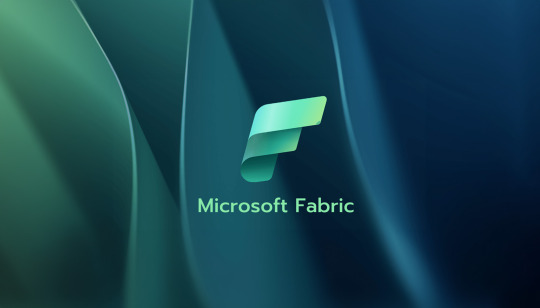
Tackling Industry-Specific Challenges with Fabric
Every industry grapples with its own unique data challenges. For manufacturers, data silos across departments like production, quality control, and logistics prevent companies from leveraging data for comprehensive decision-making. Healthcare faces its own hurdle: fragmented patient records that make it harder for providers to deliver timely, personalized care.
Microsoft Fabric stands out by unifying data, providing one cohesive platform where businesses can centralize and analyze data from across departments. This integrated approach makes data actionable, offering insights that directly tackle the specific challenges of each industry. Companies leveraging Microsoft Fabric consulting can better customize these solutions to meet their unique needs, accelerating the path to optimized data strategies.
Real-World Use Cases & Measurable Benefits
Predictive Maintenance in Manufacturing Manufacturers can collect real-time data from IoT sensors across their equipment to monitor the health of machinery. With Microsoft Fabric services, companies can employ predictive analytics to foresee maintenance needs, reducing unplanned downtime by 30% and cutting maintenance costs by 25%. This data-driven approach not only saves money but ensures that production lines stay operational with minimal interruptions.
Enhanced Patient Care in Healthcare In healthcare, unifying patient data is a game-changer. With Microsoft Fabric, healthcare providers can consolidate patient records from various departments and external sources, enabling them to offer more personalized and timely care. As a result, providers have seen a 20% increase in patient satisfaction scores, thanks to faster response times and more informed decision-making.
Bridging Data Gaps with Integration
Microsoft Fabric service integrates with critical tools like Power BI, SQL databases, and machine learning models, making it easier to unify data sources. This allows businesses to draw insights across platforms without needing to overhaul existing systems.
For instance, a manufacturing company can leverage Fabric to combine IoT data from production equipment with inventory data, enabling real-time insights into stock levels and machinery health. This integration supports proactive restocking and maintenance, helping maintain consistent production schedules. In healthcare, Fabric can unify patient data from wearables and electronic medical records, offering a comprehensive patient view that improves care coordination and response times. By bridging data gaps, Fabric empowers these industries with a holistic view of operations, enhancing both efficiency and outcomes.
Prioritizing Data Governance and Compliance
For industries like healthcare, finance, and government, data governance isn’t optional—it's essential. These industries operate under strict regulations, and mishandling data can lead to severe penalties and reputational damage. Microsoft Fabric’s built-in governance features, such as role-based access, data lineage tracking, and audit trails, help businesses comply with these regulations while maintaining control over their data. By giving organizations a clear view of data access and usage, Fabric allows teams to focus on innovation rather than constantly worrying about compliance.
Future-Proofing Data Strategy with Fabric
As businesses grow, their data analysis needs become more sophisticated. Microsoft Fabric is built to scale with those needs, allowing businesses to expand data operations without starting from scratch. Whether you're adding new data sources, increasing storage, or expanding your analytics capabilities, Fabric adapts as your business grows.
Fabric's adaptability also positions it as an ideal platform for businesses looking to leverage artificial intelligence (AI) and machine learning (ML) in the future. The platform’s flexibility supports AI-driven innovations, ensuring businesses can stay competitive in a rapidly changing data landscape. Engaging with Microsoft Fabric consultants allows organizations to strategically plan for the future and ensure their data strategies evolve as their needs grow.
Conclusion
Microsoft Fabric is a powerful data platform that promises to unify and empower organizations through actionable insights, integrated data, and top-notch governance features. With its industry-specific solutions and scalable framework, Fabric equips businesses to confidently address data challenges and advance their data strategy. It’s an ideal choice for organizations ready to transform their data into a strategic asset, paving the way for growth and innovation across sectors.
Ready to transform how your organization handles data? Contact PreludeSys to explore how Microsoft Fabric can be tailored to your needs and drive measurable impact in your industry.
#microsoft fabric service#microsoft fabric services#microsoft fabric consulting#microsoft fabric consulting service#microsoft fabric consulting company
0 notes
Text
How DevOps Consulting Services Accelerate Digital Transformation?
In the era of digital transformation, businesses are constantly looking for ways to innovate, streamline processes, and respond faster to market demands. As technology evolves, the ability to deliver software and applications swiftly becomes crucial for staying competitive. This is where DevOps Consulting Services play a pivotal role, enabling organizations to adopt DevOps practices that accelerate their digital transformation journey.
Understanding DevOps and Digital Transformation
At its core, DevOps is a set of practices that integrates development (Dev) and operations (Ops) teams to collaborate seamlessly throughout the software development lifecycle. Traditionally, development and operations have operated in silos, with developers focused on creating new features and operations teams ensuring stable deployment and maintenance. This separation often leads to delays, miscommunication, and inefficiencies.
DevOps breaks down these barriers, fostering a culture of collaboration, continuous integration, and automation. By adopting DevOps, businesses can deploy new features, updates, and applications faster, while maintaining stability and security. In the broader context of digital transformation, DevOps plays a crucial role in modernizing IT infrastructure, improving agility, and enhancing the overall customer experience.
How DevOps Consulting Services Drive Digital Transformation
Adopting DevOps successfully is not a one-size-fits-all approach. It requires expertise, customized solutions, and a deep understanding of an organization’s unique challenges. **DevOps Consulting Services** provide the guidance and support needed to implement these practices effectively. Here’s how these services accelerate digital transformation:
1. Assessment and Strategy Development
One of the first steps in the digital transformation journey is assessing the current state of an organization’s IT infrastructure and processes. DevOps consulting services begin by conducting a thorough evaluation to identify bottlenecks, inefficiencies, and areas for improvement. This assessment is essential in crafting a tailored DevOps strategy that aligns with the business’s transformation goals.
Consultants work with internal teams to design a roadmap for DevOps adoption, including infrastructure automation, continuous integration/continuous delivery (CI/CD) pipelines, and monitoring frameworks. This strategic guidance ensures that organizations have a clear path toward accelerating their development cycles and improving operational efficiency.
2. Implementing Automation for Faster Delivery
Automation is a cornerstone of DevOps practices, and it plays a vital role in speeding up software delivery. DevOps consulting services help organizations automate repetitive tasks, such as testing, deployment, and monitoring, reducing manual errors and freeing up teams to focus on higher-level activities. By implementing automation, businesses can achieve faster release cycles and respond more quickly to market demands.
Automation also extends to infrastructure management through Infrastructure as Code (IaC) tools like Terraform or AWS CloudFormation, allowing businesses to provision, scale, and manage infrastructure consistently and reliably. This leads to more efficient resource utilization and increased scalability, both of which are critical components of digital transformation.
3. Enabling Continuous Integration and Continuous Delivery (CI/CD)
CI/CD pipelines are essential for speeding up the software development process. Continuous integration ensures that developers’ changes are automatically tested and integrated into the main codebase, reducing the risk of conflicts or bugs. Continuous delivery automates the deployment process, allowing new features and updates to be released quickly and reliably.
DevOps consulting services design and implement customized CI/CD pipelines tailored to an organization’s specific needs. By incorporating automated testing, code reviews, and deployment processes, businesses can achieve a faster and more reliable software release cycle. This increased speed and agility are vital for driving digital transformation initiatives, as they enable companies to deliver new features and improvements to customers faster.
4. Enhancing Collaboration and Breaking Down Silos
Digital transformation is not only about adopting new technologies but also about transforming the way teams work. DevOps consulting services promote a culture of collaboration between development, operations, and other stakeholders. By breaking down silos and fostering cross-functional communication, these services help organizations work more efficiently and deliver better products.
Consultants often introduce DevOps tools that facilitate collaboration, such as project management platforms, chat applications, and monitoring dashboards. This increased transparency and communication streamline workflows and reduce the time it takes to resolve issues, resulting in faster development and deployment cycles.
5. Improving Security and Compliance:
Security is a top concern for businesses undergoing digital transformation. As organizations adopt new technologies and processes, they must ensure that security remains a priority throughout the software development lifecycle. DevOps consulting services help businesses implement DevSecOps practices, which integrate security into every phase of the development process.
By automating security testing and incorporating security checks into CI/CD pipelines, organizations can identify and address vulnerabilities earlier in the development process. This proactive approach ensures that applications are secure, compliant with regulations, and ready for production without delaying the release cycle.
Conclusion:
Digital transformation is essential for businesses looking to thrive in today’s fast-paced, technology-driven world. By adopting DevOps practices, companies can accelerate their development cycles, improve collaboration, and enhance their overall agility. However, implementing DevOps successfully requires expertise, strategic planning, and ongoing support.
This is where DevOps Consulting Services play a critical role. With tailored solutions, these services guide organizations through the DevOps journey, from assessment and strategy development to implementation and continuous improvement. By leveraging the expertise of DevOps consultants, businesses can unlock the full potential of DevOps and accelerate their digital transformation efforts, enabling them to stay ahead of the competition and meet evolving customer needs.
0 notes
Text
"Biz Control: Empowering Businesses Through Innovation"
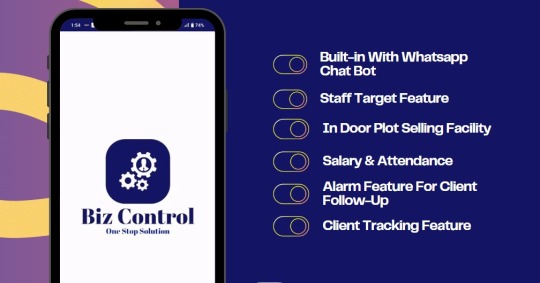
Blog Title: "Why Biz Control is the Ultimate Business Management Solution for Modern Enterprises"
In the ever-evolving business landscape, companies face unique challenges that require innovative solutions. As organizations grow, managing various processes such as human resources, payroll, customer relations, and real estate becomes increasingly complex. Enter Biz Control, a comprehensive business management platform that simplifies these operations and drives efficiency. In this blog, we’ll explore the key features of Biz Control and how it can transform your organization.
1. The Need for an Integrated Solution
As businesses scale, the reliance on multiple software tools can lead to inefficiencies, data silos, and communication breakdowns. Traditional methods of managing business operations often result in wasted time and resources. An integrated business management solution like Biz Control addresses these challenges by providing a centralized platform for managing all aspects of your organization.
2. Key Features of Biz Control
A. Comprehensive HR & Payroll Management
Biz Control revolutionizes human resources management with its intuitive tools:
Attendance Tracking: With a simple click, employees can log their attendance, minimizing errors and manual tracking efforts.
Automated Payroll: The platform streamlines payroll processing, ensuring timely salary payments based on attendance, overtime, and deductions.
Employee Self-Service: Empower your workforce with a self-service portal where they can access payslips, request leave, and update personal information.
B. Enhanced Customer Relationship Management (CRM)
In a competitive market, understanding your customers is key. Biz Control's CRM module provides the following advantages:
Centralized Customer Data: All client information is stored in one place, allowing for easy access and management.
Lead Management Tools: Track and nurture leads throughout the sales cycle, ensuring no opportunities are missed.
Detailed Analytics: Gain insights into customer behavior and sales performance, allowing for strategic decision-making.
C. Real Estate Management Capabilities
For businesses in the real estate sector, Biz Control simplifies property management:
Remote Property Booking: Agents can manage property transactions from anywhere, enhancing client service.
Listing Management: Keep all property listings organized and up-to-date in one platform.
Transaction Tracking: Monitor transactions seamlessly, ensuring nothing slips through the cracks.
3. The Benefits of Using Biz Control
Implementing Biz Control provides several benefits to businesses:
Increased Efficiency: By integrating various functions into one platform, Biz Control reduces the time spent on manual tasks, allowing employees to focus on higher-value activities.
Improved Collaboration: A centralized system fosters better communication between departments, enhancing teamwork and productivity.
Data-Driven Insights: With comprehensive reporting and analytics, businesses can make informed decisions that drive growth.
4. Conclusion
In today’s competitive landscape, having the right tools is essential for success. Biz Control offers an all-in-one solution that simplifies business management, enhances efficiency, and empowers organizations to thrive. By integrating HR, payroll, CRM, and real estate management, Biz Control provides the flexibility and scalability needed for modern enterprises. Discover how Biz Control can transform your business operations and set you on the path to success today!
Feel free to customize any part of the blog or let me know if you’d like additional information on specific topics!
0 notes